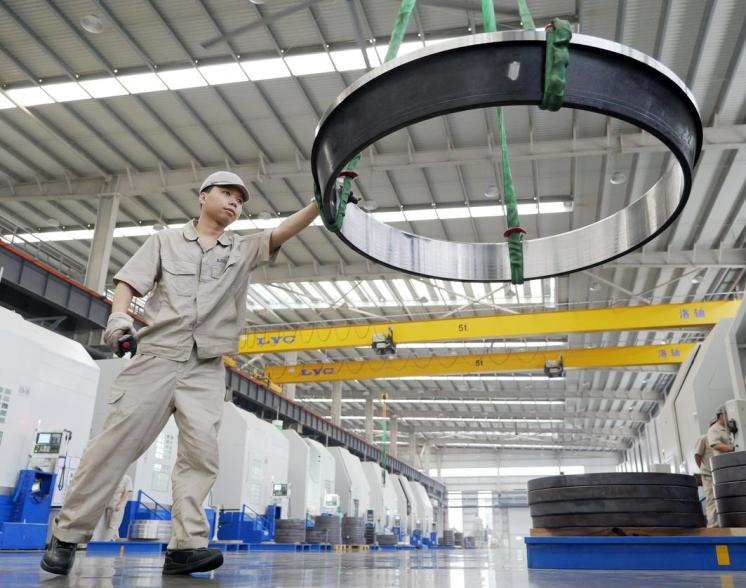
It is reported that the Chinese government is discussing formulating a new manufacturing development plan to replace the "Made in China 2025" plan, which concluded this year. The key points of the new plan include giving priority to the development of key technologies such as wafer manufacturing equipment.
The interviewed scholars believe that manufacturing is related to employment and national security, and it is also an important support for China under the game between China and the United States. China will firmly grasp this advantage and take the upgrading of manufacturing as a long-term strategy.
China proposed the "Made in China 2025" plan in 2015. Bloomberg reported on Monday (May 26), citing multiple people familiar with the matter, that Beijing is drafting a new version of the plan, but will not follow a similar naming convention to avoid criticism from Western countries.
This year is also the last year of China's 14th Five-Year Plan (2021-2025). Bloomberg reported that the formulators of the next "15th Five-Year Plan" (2026-2030) hope to maintain the proportion of manufacturing in the gross domestic product (GDP) at a stable level in the medium and long term. Manufacturing currently accounts for approximately a quarter of China's economic aggregate.
Insiders disclosed that officials are still discussing whether to set a target for the proportion of consumption in GDP in the "15th Five-Year Plan", but due to concerns about the lack of effective tools to stimulate household spending, relevant departments currently tend not to set quantitative targets for this.
The report holds that although the United States has criticized China for manufacturing too much and consuming too little domestically, causing trade imbalance, the current developments in Beijing indicate that China will continue this strategy. The efforts of the United States to cooperate with China to promote economic rebalancing may be difficult to be effective.
Gu Qingyang, an associate professor at the Lee Kuan Yew School of Public Policy at the National University of Singapore, told Lianhe Zaobao in an interview that China's manufacturing strength is an important support and confidence for China in the competition between China and the United States. China will not follow the US pace to "rebalance", but will firmly grasp its manufacturing advantages to grow stronger and move towards high-end.
Gu Qingyang believes that the core strategy of China in the next 10 years will be the upgrading of manufacturing led by science and technology. The new plan will be significantly different from "Made in China 2025", placing greater emphasis on high-precision and cutting-edge areas that need to deal with the US technological blockade, such as chips and artificial intelligence, and will also be more forward-looking.
He also said, "The increase in the proportion of consumption is a natural result of economic development, rather than a strategic goal." Relying solely on stimulating consumption is not enough to support China in achieving a strong military, economic autonomy or breaking through the bottleneck of key technologies.
Song Wendi, a researcher at the Atlantic Council, a US think tank, pointed out in an interview that manufacturing is the key to China's job market and also has an impact on security. China is striving to avoid geopolitical factors from disrupting its supply chain, and therefore needs to enhance its capacity for self-sufficiency in manufacturing. Facing the possible escalation of technological blockades, independent innovation will be the key word of China's new plan.
Song Wendi predicted that Beijing will continue to intensify its policy efforts to stimulate domestic demand, while emphasizing the importance of countries in the global South to reduce reliance on the United States and achieve market diversification.
"Made in China 2025" was targeted by the US and European countries during US President Trump's first term and became one of the triggers of the Sino-US trade war in 2018. Gu Qingyang said that the new plan will not retain its original name, but essentially it will still strengthen manufacturing led by technology. "This is no secret," he said.
This is the right way. We should continue to improve the manufacturing industry, adhere to self-reliance and self-strengthening, and master key core technologies.

Recently, according to 9To5Mac, the Apple Podcasts app was exposed to have the problem of automatically redirecting unsubscribed programs, and some of the redirected programs were suspected to contain malicious links.
Recently, according to 9To5Mac, the Apple Podcasts app was …
Recently, multiple Federal Reserve officials have publicly …
Ukrainian President Vladimir Zelensky met with French Presi…
In November 2025, South Korean e-commerce giant Coupang was…
On December 2, 2025, the international silver market witnes…
On November 30 local time, a report released by the Stockho…